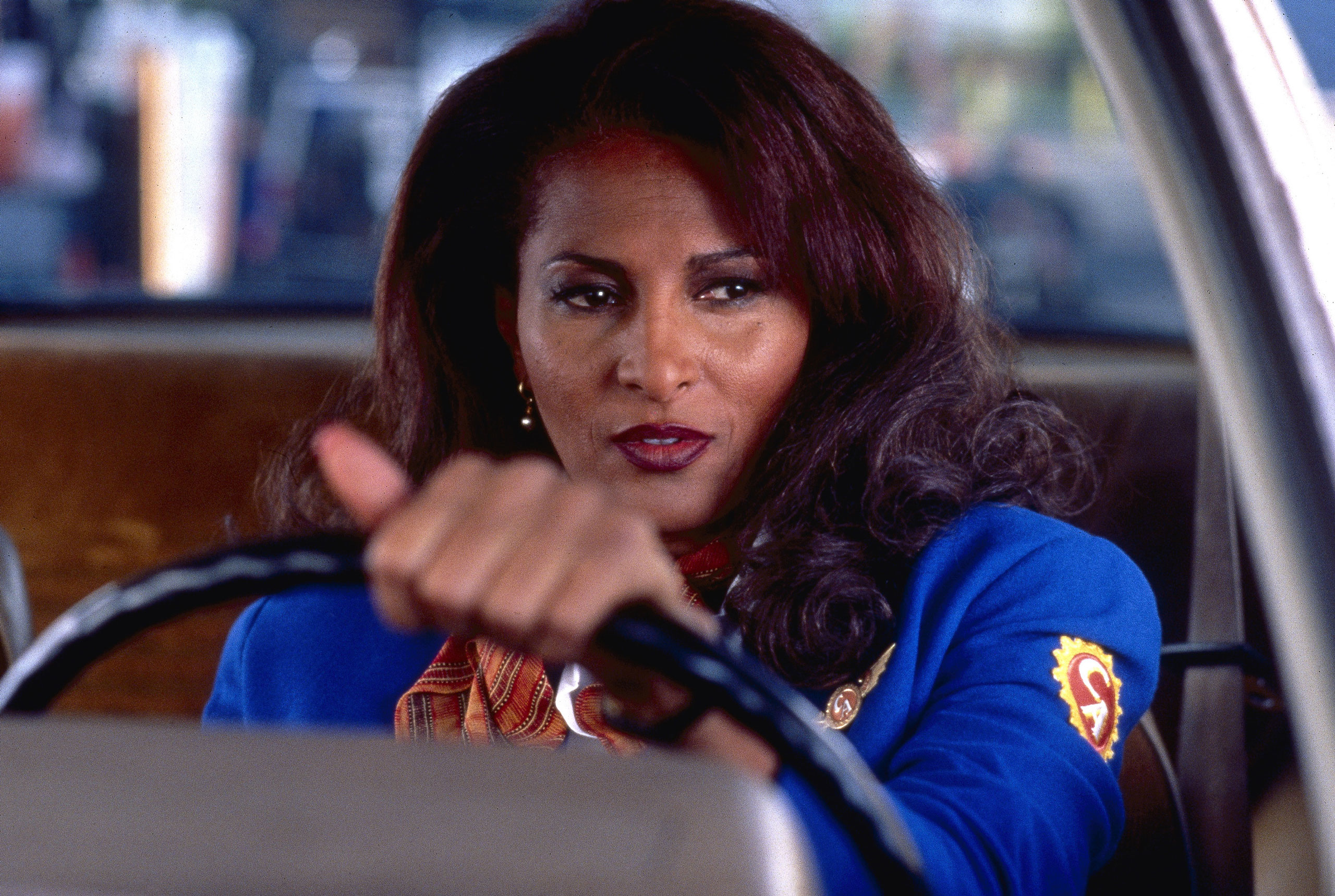There’s a generation of people who adore Pulp Fiction (1994) because it practically blew the tops of their heads off—its brash energy counts for a lot. But Jackie Brown is Quentin Tarantino’s great picture of the 1990s. It’s less showy than the earlier film, but filled to the brim with feeling, a movie that brings the past into the present and reminds us to be careful about what we throw away—starting with the casting. Pam Grier, a goddess of ’70s grindhouse films who, by the ’90s, wasn’t exactly seeing the plum roles pour in, plays the Jackie of the title, a flight attendant for a low-rent airline who makes a little scratch on the side by smuggling money for her firearms-dealer boss (Samuel L. Jackson). She gets busted; bailbondsman Max Cherry (Robert Forster, another actor who’d practically been forgotten at the time) gets her out of jail and instantly falls in love with her. The story, adapted from Elmore Leonard’s 1992 novel Rum Punch, involves multiple double-crossings and a not-insignificant number of nasty murders. Yet the movie is filled with love, chiefly Tarantino’s love for Forster and Grier, two actors he was nuts about as a kid, and they’re glorious here. Jackie Brown is Tarantino’s warmest movie, a love letter to the second chance. Everybody deserves one.
- The 100 Most Influential People of 2024
- Coco Gauff Is Playing for Herself Now
- Scenes From Pro-Palestinian Encampments Across U.S. Universities
- 6 Compliments That Land Every Time
- If You're Dating Right Now, You're Brave: Column
- The AI That Could Heal a Divided Internet
- Fallout Is a Brilliant Model for the Future of Video Game Adaptations
- Want Weekly Recs on What to Watch, Read, and More? Sign Up for Worth Your Time
